‘I want to be the painter of my country.’ So wrote Brazilian artist Tarsila do Amaral (1886–1973), in a letter sent to her family during a visit to Paris in 1923. The words are reprinted at the entrance to the exhibition, currently on view at the Museum of Modern Art in New York, of work by the artist usually known simply as Tarsila. As her pithy statement implies, Tarsila’s paintings proposed an alternative approach to modernism, one that synthesised European influences and the indigenous traditions and spirit of Latin America in the pursuit of a native model of the vanguard. The first survey in the United States dedicated solely to her work, ‘Tarsila do Amaral: Inventing Modern Art in Brazil’ follows the artist’s travels throughout the 1920s across her home country’s vast landscape. It recalibrates her impact on the nation’s search for an autonomous modern identity, as she toggled Europe’s strong cultural influences and Brazil’s repressive history of colonialism, slavery and Catholicism – all the while negotiating her own path towards both national expression and artistic selfhood.
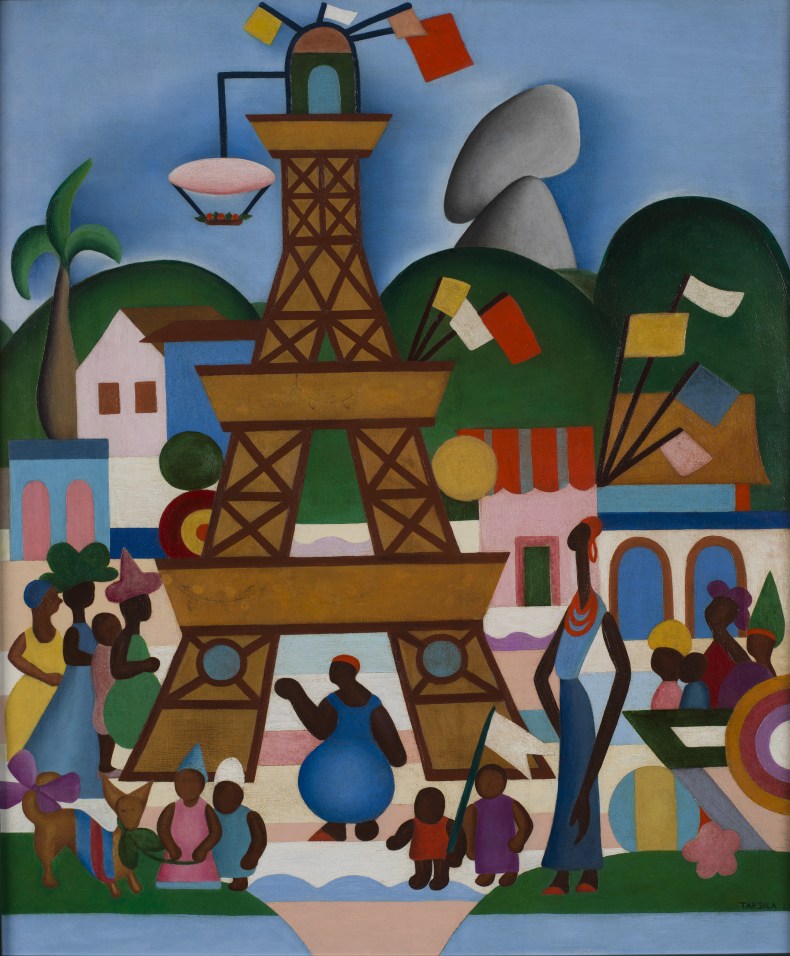
Carnival in Madureira (Carnaval em Madureira) (1924), Tarsila do Amaral © Tarsila do Amaral Licenciamentos
Tarsila’s education as an artist unfolded with frequent transatlantic journeys from São Paulo, where she was raised on her family’s large coffee plantation (fazenda) outside the city, to cosmopolitan Paris. The formative year of 1923 was spent fulfilling what she once described as her ‘military service’ to Cubism under the tutelage of André Lhote, Albert Gleizes, and Fernand Léger, and visiting the studios of Brancusi and Picasso. Her steady appraisal and application of Cubism’s planar, volumetric language is discerned in her early still lifes and figural studies. An equally significant influence, however, was Tarsila’s earlier association with an aspiring group of artists, writers and poets, including Anita Malfatti, Oswald de Andrade, Mário de Andrade, and Menotti del Picchia, who had participated in the celebratory Semana de Arte Moderna (Modern Art Week) of 1922 in São Paulo, and subsequently formed the artist collective, Grupo dos Cinco (Group of Five). An eagerness to travel marked her return to Brazil in late 1923, first to experience carnaval in Rio de Janeiro followed by trips to the historic colonial towns in the southeastern state of Minas Gerais. Tarsila’s signature linear precision, bold colors and rudimentary contours coalesce in the vibrant landscapes depicting local residents among native fauna and flora.
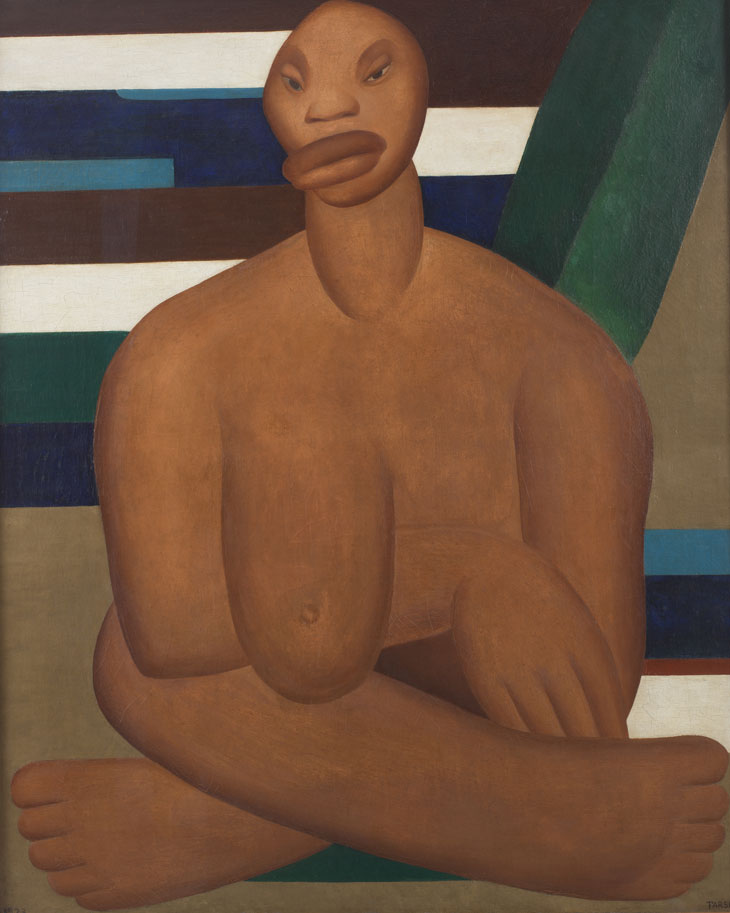
A Negra (1923), Tarsila do Amaral. Museo de Arte Contemporânea de Universidade de São Paulo. © Tarsila do Amaral Licenciamentos
It was also in 1923 that Tarsila produced the painting A Negra (The Black Woman). The work’s formidable presence heralds the birth of the mature artist Tarsila would become. In this oil portrait actually created in Paris, the torso of a robust woman of African descent rests frontally and cross-legged against a single banana-tree leaf and textile pattern. The image invokes Brazil’s African and matricentric culture, recalling its long history, and late abolishment in 1888, of slavery. Simultaneously, we are confronted with an encyclopaedic array of potential ethnographic sources and modern references – a clear indication of the direction of Tarsila’s imminent production.
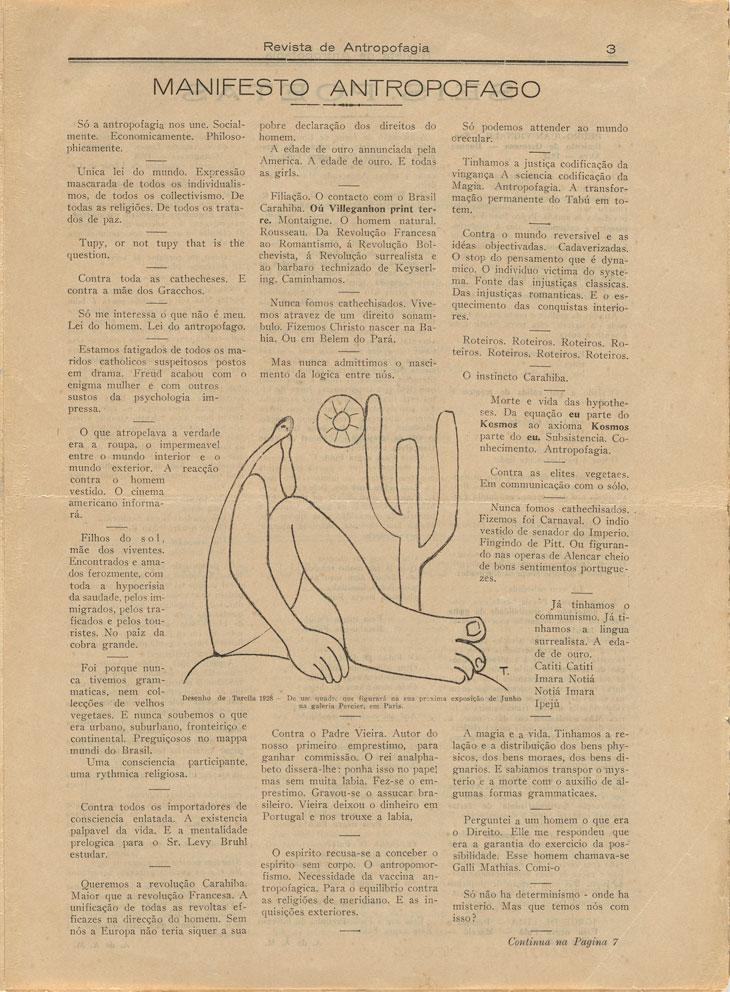
Oswald de Andrade’s ‘Manifesto antropófago’ (Manifesto of Anthropophagy), with drawing by Tarsila do Amaral, in Revista de Antropofagia 1, no. 1 (May 1928). The Museum of Modern Art Library. Photo: John Wronn
Cannibalism functions as a powerful metaphor of cultural ingestion. Having feasted on the aesthetic cues of Western art history, from Dürer to Manet, Cézanne and Gauguin, in Abaporu (1928) Tarsila converges on something both elementally Brazilian and mythical: a distillation of the country’s indigenous inheritance in the supple figure rooted beside a great cactus and crowned by the sun. The work’s name was drawn from the Tupi-Guarani Indian language meaning ‘aba’ (a person) and ‘poru’ (who eats human flesh). In this singular composition we find the genesis of Brazilian modernism, even before it inspired and was used to illustrate the ‘Manifesto antropófago’ (Manifesto of Anthropophagy) written in 1928 by Tarsila’s husband, Oswald de Andrade. Anthropophagy, in the definition provided by curator Luis Pérez-Oramas in the exhibition catalogue, ‘manifests a longing to devour an object of desire with which we identify’ – and for this longing Tarsila provided the seminal iconography. In her subsequent Antropofagia (Anthropophagy) of 1929, Tarsila delves further into the sexual and political dynamics of the metaphor in the sensitive interplay of two abstracted bodies, a male and female, placed in a stylised tropical landscape illuminated by a lemon-slice sun.
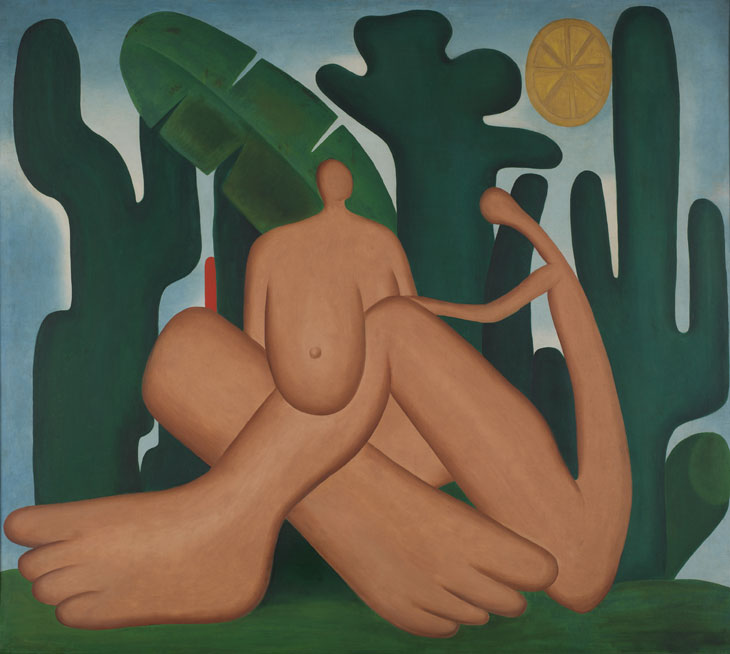
Anthropophagy (Antropofagia) (1929). Tarsila do Amaral. Coleção Gilberto Chateaubriand, Museu de Arte Moderna, Rio de Janeiro. © Tarsila do Amaral Licenciamentos.
In its reunion of the artist’s three major paintings, a generative triptych, MoMA’s exhibition animates the question of what it means to be the painter of her country. The numerous drawings, sketchbooks, and photographs on display in the exhibition provide an equally revealing insight into Tarsila’s working process and personality. Using a striking self-portrait for the cover of her exhibition catalogues from this decade, including her monographic presentations in Rio de Janeiro and São Paulo in 1929, she demonstrates a keen awareness, as a modern woman navigating her career, of her shifting public persona and artistic status.
The significance of the Anthropophagic movement was not fully appreciated in its time, before the postwar generation of Brazilian artists and composers such as Lygia Clark, Hélio Oiticica, and Caetano Veloso came to recognise and recuperate its meaning in their own production. While Tarsila’s later career was motivated by political and social activism, her body of work from the 1920s shaped modernism as both a native and international language, one that absorbed and cultivated aesthetic influences without sacrificing its own identity. For many, Tarsila is the modern master for the past century and for the present one.
‘Tarsila do Amaral: Inventing Modern Art in Brazil’ is at the Museum of Modern Art, New York, until 3 June.
Unlimited access from just $16 every 3 months
Subscribe to get unlimited and exclusive access to the top art stories, interviews and exhibition reviews.

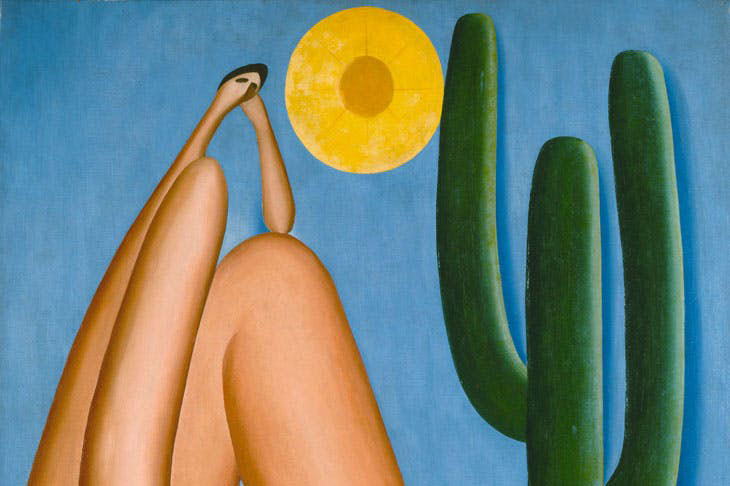
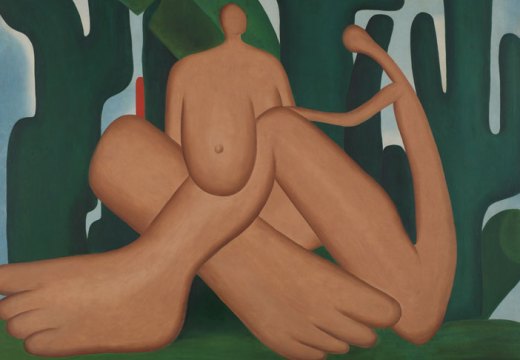
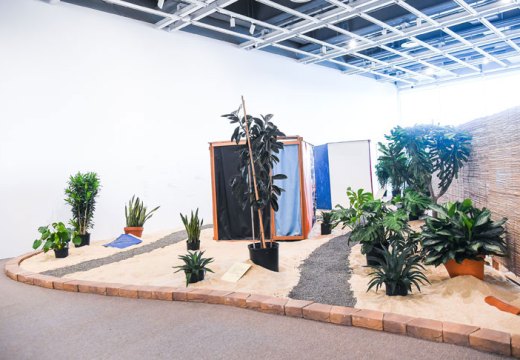










![Masterpiece [Re]discovery 2022. Photo: Ben Fisher Photography, courtesy of Masterpiece London](http://www.apollo-magazine.com/wp-content/uploads/2022/07/MPL2022_4263.jpg)
It’s time for the government of London to return to its rightful home